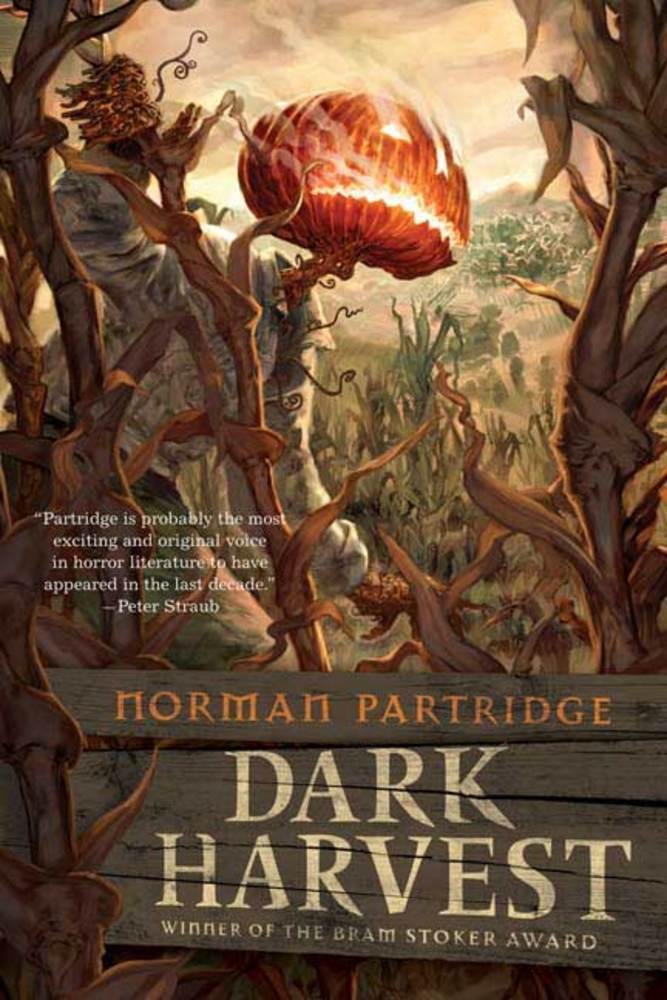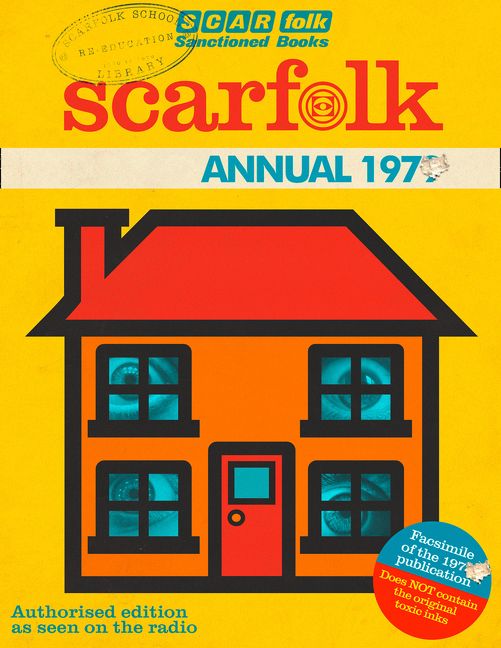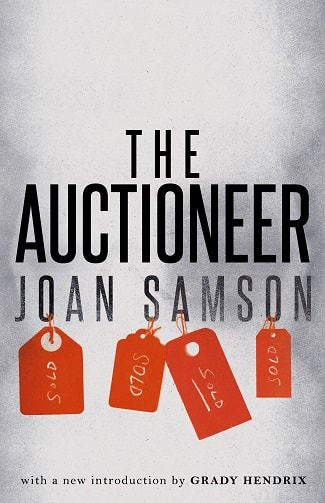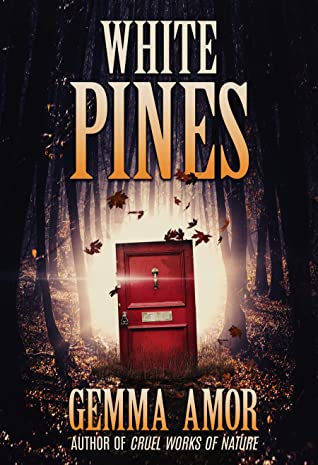sample heading
While there might be some debate to what actually defines it, a quality that makes it something of an “I’ll know it when I see it” genre, folk horror is an enduring strain of horror. It makes sense it would be: there’s plenty to be afraid of in mysterious rituals, odd outside influences, and the general quiet and eerie atmosphere of wide open places the onrushing crush of “modernity” hasn’t found yet. But while the definition might be a little nebulous, there are definite signifiers, with the genre favoring smaller communities, unusual rituals, older folk legends and folklore, rural environments, and in a number of cases (as in the most famous example of folk horror, The Wicker Man) at least one human sacrifice. With the summer solstice approaching and more of us (slowly) venturing outside, we compiled a list of six books where the woods are dark, the communities are small, and occasionally someone gets killed for the good of this year’s harvest.

Creeping Jenny, Jeff Noon
The third in Noon’s Nyquist trilogy, a series of bizarre horror-fantasy novels (which trend further towards horror with each new installment) that sees his hardboiled but in-over-his-head detective John Nyquist arriving at the small village of Hoxley-on-the-Hale with a series of disturbing photographs and a case to solve. But the town is embroiled in an odd series of traditions all centered around the various saints they worship, and the locals are wildly unhelpful when Nyquist calls on them for help, preferring to drug him or otherwise lie to him to protect their secrets. The weirdness of Hoxley is the perfect foil for Nyquist, who is no stranger to weirdness but still finds the town throwing him repeated curveballs, and Noon perfectly hits the flavor of small-town folk horror with the book, including vague references to saints who might actually be pagan deities, and of course the masked agent of chaos (and homicidal vegetation) found at the center of it all.
Apple | Bookshop.org | Amazon | Barnes & Noble | IndieBound

Dark Harvest, Norman Partridge
A halloween favorite with a premise best described as “what if The Lottery got in a street fight with The Warriors,” Dark Harvest ramps up over the course of a single Halloween night in a small Midwestern town with a weird ritual. Every Halloween, the October Boy awakes in the cornfield and must make his way to the town church, hunted by every young man of age in the town, all of them hopped up from eating nothing but candy for a month straight. Whoever catches and kills the October Boy is then granted safe passage out of the town borders to live in the outside world, as moving away from the town otherwise is punishable by death. Partridge’s fast-paced story whips back and forth as various groups try to survive the night, chasing the supernaturally-powered October Boy through the streets of the town. It’s a tightly plotted B-movie in text form, violent and ominous enough to give the story some tense narrative stakes while still keeping the action fast, furious, and enjoyable to read.
Apple | Bookshop.org | Amazon | Barnes & Noble | IndieBound

The Scarfolk Annual, Richard Littler
Littler has unnerved and entertained thousands of people over the years (you probably know him from someone sharing this picture on social media) with his blog, a bizarre social satire of modern mores and 1970s British aesthetics set in a town where “hauntology is a compulsory subject at school and everyone must be in bed by 8 PM because they are perpetually running a slight fever.” Scarfolk Annual, Littler’s second book set in the eponymous town, takes the form of a children’s annual publication distributed to the children of Scarfolk. Littler’s flair for graphic design and dark humor serves the book well, with an opening footnote that claims “your parents resent you” and a “ritual henge” apartment building welcoming you to the village of Scarfolk. Littler is one of the few web-based talents whose work actually thrives even more outside the short bursts of the blog, and the creepy weaponized nostalgia makes for a note-perfect folk-horror satire.
Apple | Bookshop.org | Amazon | Barnes & Noble | IndieBound

Pine, Francine Toon
A gorgeous, dark, and methodical work somewhere between rural gothic and folk-horror, Pine begins with Lauren and her father on their way from a search party, suddenly finding a young woman in a white dress on the side of the road. The woman, who is almost catatonic, seems to have some relationship with Lauren’s father Niall, and vanishes the next morning without a trace, leaving barely any memory of her presence behind. This, along with the disappearance of a local teenager, are only two of the odd goings-on in the small highland town where Lauren and Niall live (after the similarly strange disappearance of Lauren’s mother), and each unusual event seems to bring more of a sense of dread. While the book can be a very slow burn at times, it’s a masterpiece of quiet horror, at the same time a raw, emotional look at a family in a small town where everyone knows everyone.

The Auctioneer, Joan Samson
A pastoral gothic with a strong emphasis on social pressure and ritual, The Auctioneer begins with a stranger named Perly Dunsmore moving into a small rural town. Dunsmore helps the local police hold a series of benefit auctions, each time taking more and more of the townspeople’s possessions and selling them away, as first a series of violent crimes and then the growing desire for order keep increasing the need for a police force in the town. While the townspeople are reimbursed for their auctioned goods, Dunsmore and the local Sheriff keep taking more and more of their goods and freedoms, leaving them with less and less. The book nails the kind of plain-spoken tone associated with rural America, and its introduction of the characters and slow setup of its plot does its best to make it seem like something’s off, but not wrong. As the hole grows deeper around the town and Dunsmore takes more and more of them, that sense of wrongess only grows, leading to the eventual denouement.
Apple | Bookshop.org | Amazon | Barnes & Noble | IndieBound

White Pines, Gemma Amor
Ten years ago in the town of White Pines, some fifteen hundred people disappeared. A decade later, Megan is left a house in the Scottish highlands by her estranged grandmother. Upon arriving, she feels like she’s returned, but she can’t put her finger on why. Things only get stranger from there, with the odd stone circle in the basement that buzzes like electricity when touched, and the eerie energy in the surrounding area. These sort of stories have always been more of a slow-burn, but Amor picks up the pace, starting with the slam-bang of Megan’s divorce directly into the eerie house in the highlands, complete with coin-operated electric meter and creepy neighbors. But White Pines doesn’t let its faster pace detract from the quiet horror of the atmosphere, the unnerving secrets of the surroundings, and the eventual intense horror. It also ups the tension considerably by allowing Megan to be a more complex, flawed character who shares some complicity (at least at first) in the events that led her to the highlands, working through her own issues as things spiral out of control.




One thought on “6 Folk Horror Books for Your Summer Solstice Needs”